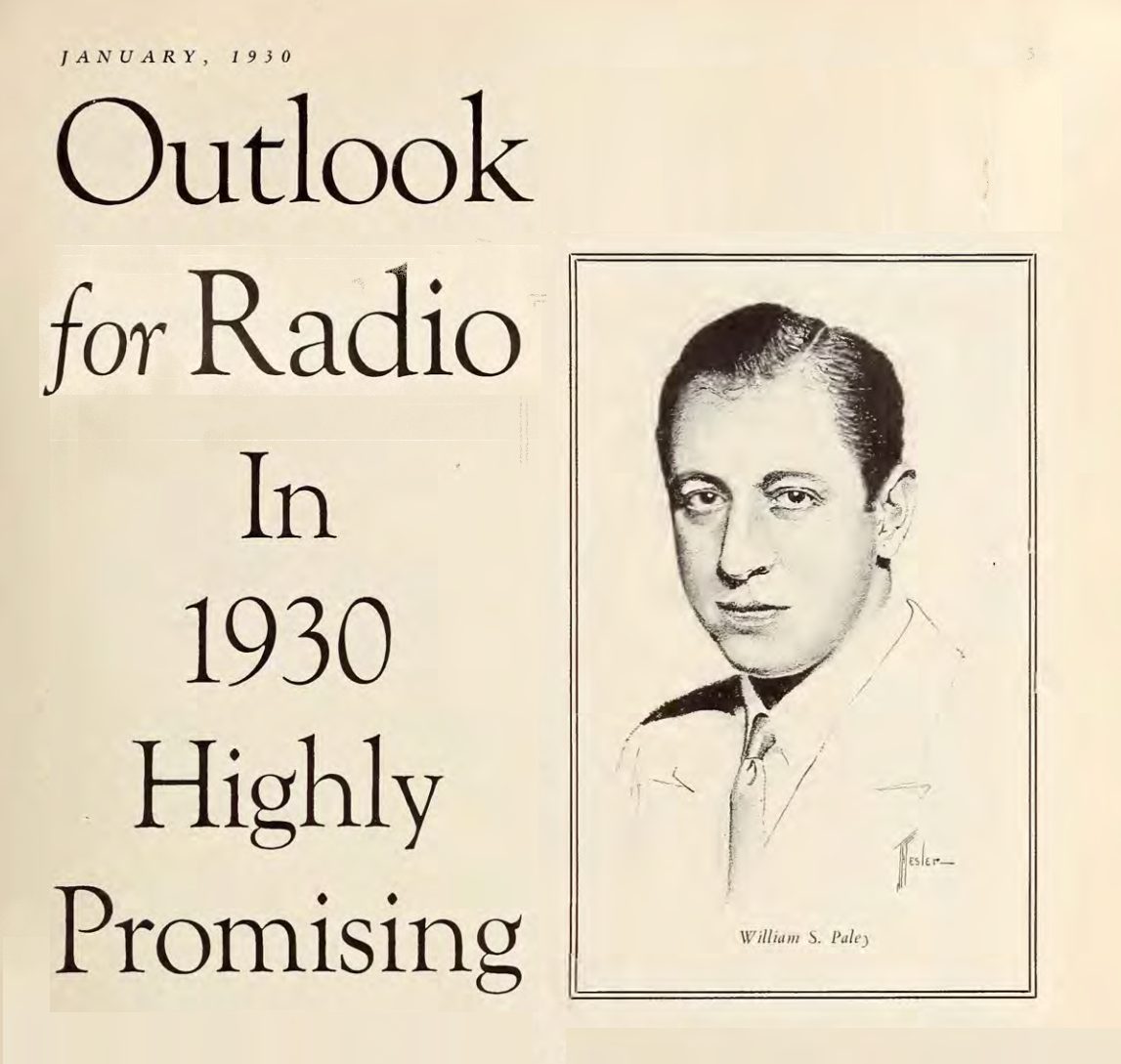America's history through the lens of 20th century broadcast media
Copyright 2020 Greenstone Media Consulting, LLC
American Broadcasting Company - Seattle - 1929

Columbia marched right along leaving ABC behind
(William Paley, pictured)
Radio Review, January 1930
(William Paley, pictured)
Radio Review, January 1930

American, Allied and Columbia
Notwithstanding ABC’s formally carrying
Columbia’s programming beginning in
January, 1929, All-BC was steaming ahead throughout the year. An April 20, 1929 press
announcement carried in "Radio World" reported that “a new chain of broadcasting stations is
underway” and that “Allied Broadcasting Companies in the East now represents the nucleus of the
chain now known as the American Broadcasting Company on the West Coast”. In that announcement
Eric Palmer reported that the new chain would offer new ideas in broadcasting including the
intention to originate some programs, “with Western ideas of presentation” from the west on some
days and other programs from the east on others.
One can assume that such announcements raised questions in the mind of Bill Paley about his
functional “partnership” with Linden. As things further developed, however, Paley’s anxiety must
have escalated.
On June 29, Frederick Dahlquist – ABC’s general manager – announced impending changes. These
included the planned move of ABC’s executive offices from Seattle/ KJR to San Francisco/KYA as well
as the presumably phased move of ABC’s major musical programming originations from Seattle to San
Francisco. "Geographically speaking, San Francisco is the real center of all the combined activities
conducted over the ABC Chain," said Dahlquist, "and although KJR, our Seattle studio, will retain its
present position as the key station for the majority of the programs, we will eventually transfer this
important phase of broadcasting to this city."
The shift away from Seattle had never been suggested in any prior public statements about ABC.
Indeed, the presence of ABC in Seattle had been heralded by Lindquist and other Seattle interests as
a way of putting Seattle ‘on the map'. However, the network’s financial challenges were mounting
and Linden and Dahlquist were perhaps persuaded that a more San Francisco-based enterprise would
find it easier to secure program sponsors and capital.
Addressing ABC’s national aspirations, Dahlquist went on saying "Both Adolph Linden, president of the
company, and I have long considered the possibility of expanding the present system to one that will
extend from coast to coast with a daily schedule of sixteen hours continuous broadcasting. This
schedule is now being maintained over our present western division. It Is probable that the expansion
program will go into effect about October 1. As producing centers we will use San Francisco, Los
Angeles, Chicago and New York, and it is more than likely that other cities may be included, but at
present these are the four cities selected. This means that controls will be switched as many as a
dozen times a day. One minute you will be listening to a program from Los Angeles, the next minute
Chicago will be brought in, and so on until the complete circuit has been made. This we believe, Is
an Innovation in chain broadcasting and one that it is hoped will meet with the satisfaction of
listeners.”
While Dahlquist went on to say that ABC would fulfill its contractual commitments to Columbia for
carriage of its programs “as this chain has no outlet west of Omaha,” ABC essentially concurrently
announced the sale of stock (further described on the next page) in which its plans for a national
network -- not including Columbia -- were made fully apparent. These announcements must have
been the final straw for Paley.
On August 10, 1929 Columbia announced that it had signed affiliation
agreements, effective January 1, 1930 (which was presumably the
date on which the Columbia-ABC contract would have expired), for
western affiliates to replace Columbia’s western coverage through
ABC. “The decision to sign the contracts", the Columbia statement
said," followed an announcement by the American Broadcasting Co.
that it would extend its chain into the East. Such extension would
place Columbia and A.B.C. in competition".

.png)